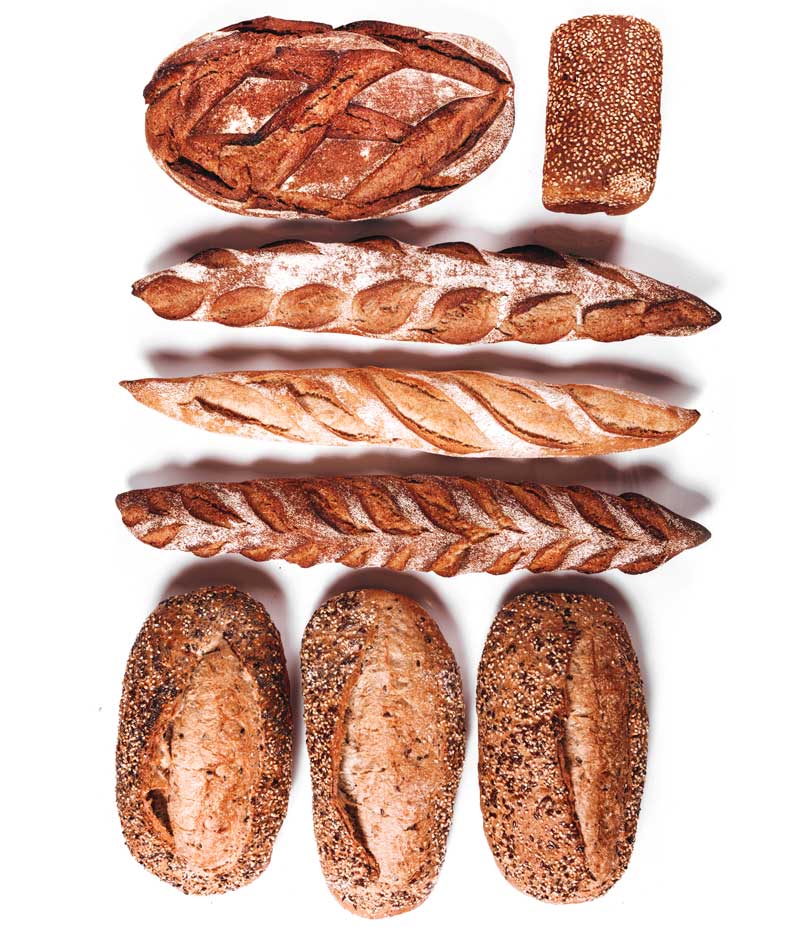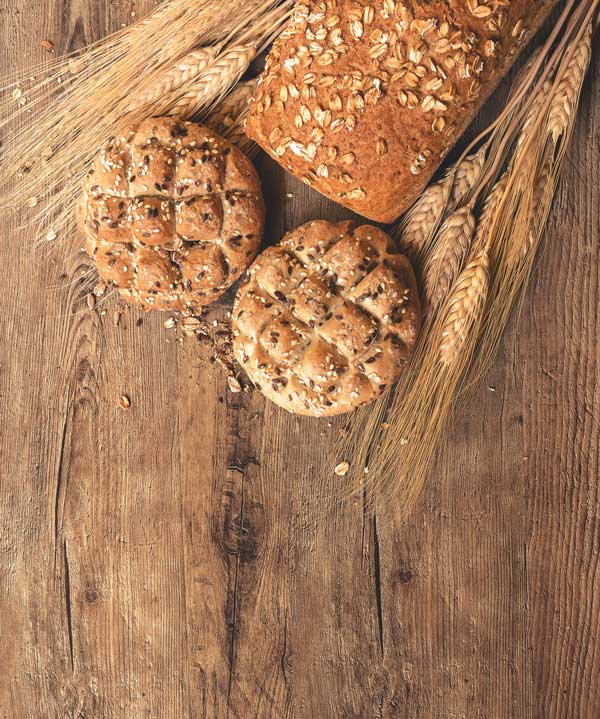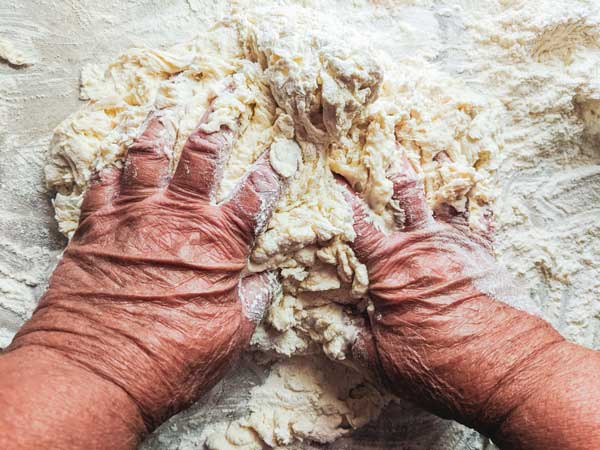
Frequently Asked Questions
A kernel of wheat is an important storehouse of nutrients. Products made from wheat can provide important amounts of iron, protein, the B-vitamins (thiamin, riboflavin and niacin) and food energy.
The endosperm is used, which consists of about 83 percent of the kernel and is the source of all flours. Bran is used in whole wheat flour and comprises about 14.5 percent of the kernel. Wheat germ is also included in whole wheat flour, comprising about 2.5 percent of the kernel. Wheat germ is the embryo, or sprouting section, of the seed and usually is separated because it contains some fat which limits the storing quality of the flour. Click here for more an illustration and more information.
Hard wheats tend to be higher in protein content which forms a stronger gluten structure. Gluten provides the structure for all bakings. For this reason, hard wheats are especially suited for making bread.
In milling all-purpose flours, the endosperm is separated from the wheat germ and the wheat bran that surround it. The wheat germ and bran contain some of the nutrients of the whole kernel. To replace the loss of these nutrients flour is enriched by the addition of thiamin, riboflavin, niacin and iron.
It has been know for centuries that freshly milled flour does not make good baked products. When stored for several months so that natural oxidation occurs, flour becomes whiter, has a finer texture and its baking quality improves. In the early 1900’s, food technologists created chemical methods to whiten the flour and improve its baking performance very quickly. These bleaching and maturing agents, as they are called, are added in very small amounts.
Bread is eaten by just about everyone. Bread was first enriched with vitamins and iron during World War II when the rationing and short supplies of many foods threatened to create serious dietary problems. As a result of enrichment, there was a measurable improvement in health and certain vitamin deficiencies were virtually eliminated. At the time, enrichment became known as “the quiet miracle.”
There is not a federal law that requires enrichment. A majority of states require the enrichment of white bread. The following states do not have an enrichment law:
- Delaware
- Illinois
- Iowa
- Maryland
- Michigan
- Minnesota
- Missouri
- Nevada
- North Carolina
- Pennsylvania
- Tennessee
- Vermont
- Virginia
- Wisconsin
Products made from bromated flours have better volume and crumb structure. Potassium bromate, a maturing agent, is added in very small amounts. Not all flours are bromated, however those flours containing bromate are required to be labeled “bromated”. The flours most commonly bromated are high protein wheat, rye, and whole wheat.
Malted barley flour is specially milled from sprouted barley that contains high levels of naturally occurring enzymes. These enzymes supplement the natural enzymes present in wheat flour and aid in making better yeast-raised baked products.
All flours should be stored in airtight canisters. If flour is to be kept over an extended period of time, it is should be packaged for freezing and kept frozen. After it has been frozen, flour should be brought to room temperature for the baking of yeast breads. Whole wheat flour should be stored in a moistureproof, vaporproof plastic bag in the refrigerator or freezer. When stored at room temperature, use the flour within six to eight months.
Flour absorbs moisture; therefore humidity will affect the use of flour in recipes. When following a recipe, it may be necessary to use less or more flour. Do not change the liquid measurement that is called for. Humid climates require a higher measurement of flour because of the moisture that has been absorbed by the flour. In areas of lower humidity, a smaller measurement of flour may be needed.
Flour should be measured by dipping and leveling. Numerous tests have proven that the best method of measuring flour is to dip a dry measuring cup into the canister to fill and then level off the cup with a straight edge. Do not tap the cup or pack the flour. Certain cake flours are the exception and can be spooned into the cup and then leveled.
The baking industry adds calcium propionate to bread as a preservative to in inhibit the development of mold and bacteria. The Food and Drug Administration regulates the amount of the chemical that may be used in bread.
YES! Enriched white flour and/or enriched white bread contribute calories, protein and other important nutrients. Enriched white flour has comparable or even higher levels of thiamin, riboflavin, niacin and iron as whole grain flour.
All foods contribute calories in varying amounts. There really is no such thing as “fattening” or “non fattening” food. Carbohydrate and protein components of bread each provide four calories per gram, while fat provides nine calories per gram. In the case of grain products, a large amount of the calories come from complex carbohydrates (starch).


